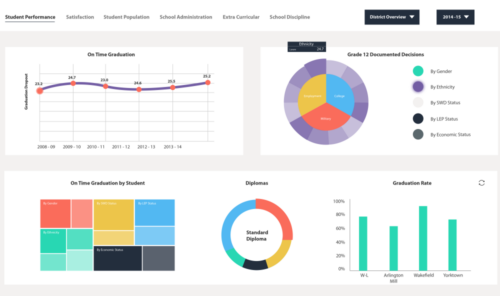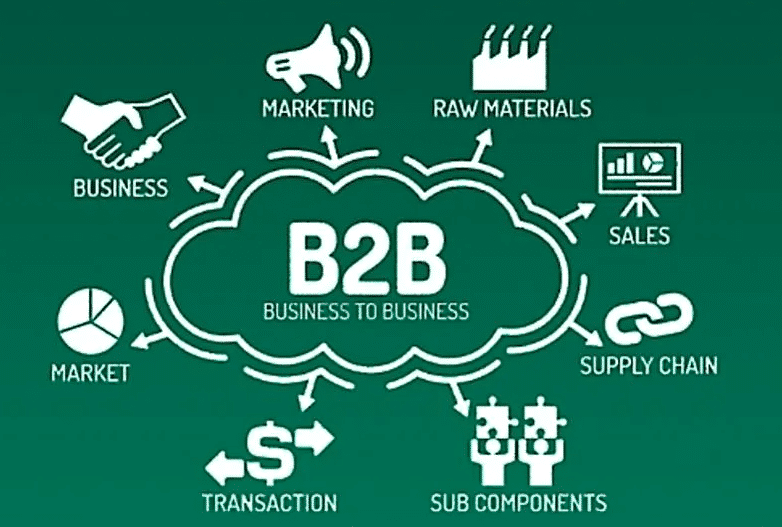Revolutionize your production with cutting-edge manufacturing software solutions. Boost efficiency, reduce costs, and stay ahead of the competition.
In today’s fast-paced business landscape, manufacturing companies are constantly seeking ways to boost productivity and enhance profitability. One of the most effective strategies they can employ is the implementation of cutting-edge manufacturing software.
This article will delve into the world of manufacturing software, exploring its significance in the industry and how it can revolutionize your business operations.
Manufacturing is the backbone of countless industries, and staying competitive in today’s global market requires constant innovation. One of the most transformative innovations in recent years has been the adoption of manufacturing software solutions.
Solving Manufacturing Challenges with Software: Success Stories Revealed
Understanding Manufacturing Software
Manufacturing software refers to a suite of computer programs and tools designed to optimize and automate various aspects of the manufacturing process. These software solutions are tailored to meet the specific needs of manufacturers and can encompass a wide range of functions, from inventory management to production scheduling.
Benefits of Manufacturing Software
– Streamlined Operations
One of the primary advantages of manufacturing software is its ability to streamline operations. By automating repetitive tasks and providing real-time insights into production processes, it enables manufacturers to operate more efficiently.
In the highly competitive world of manufacturing, efficiency is the key to success. Streamlined operations are at the heart of this efficiency, and manufacturing software plays a pivotal role in achieving it.
What Are Streamlined Operations?
Streamlined operations refer to the optimization and simplification of every facet of the manufacturing process. It involves removing unnecessary steps, reducing waste, and enhancing overall productivity. With the help of manufacturing software, this can be achieved with precision and consistency.
How Manufacturing Software Enhances Streamlined Operations
Automation: Manufacturing software automates repetitive tasks, such as data entry and inventory tracking. This reduces the margin for error and frees up valuable human resources for more strategic activities.
Real-time Data Insights: With manufacturing software, you gain real-time insights into your production processes. This means you can monitor the status of orders, inventory levels, and machine performance instantly, allowing for quick decision-making.
Production Scheduling: Efficient production scheduling is crucial for meeting deadlines and minimizing downtime. Manufacturing software helps in creating optimal production schedules, considering factors like machine availability and material availability.
Supply Chain Integration: Streamlined operations extend beyond the factory floor. Manufacturing software often integrates with supply chain management systems, ensuring that materials are procured and delivered just in time, reducing excess inventory costs.
Quality Control: Ensuring the quality of products is an integral part of streamlined operations. Manufacturing software tracks every step of the production process, allowing for real-time quality control checks and immediate corrective actions if deviations occur.
Reduced Paperwork: Streamlining operations means less paperwork and manual record-keeping. This not only saves time but also contributes to a greener, more sustainable manufacturing process.
Benefits of Streamlined Operations
The benefits of achieving streamlined operations through manufacturing software are multifaceted:
- Cost Savings: Reduced labor costs, minimized downtime, and efficient resource allocation result in significant cost savings.
- Faster Time-to-Market: With streamlined operations, you can bring products to market faster, giving you a competitive edge.
- Higher Quality Products: Improved quality control leads to higher-quality products and greater customer satisfaction.
- Agility: The ability to adapt to changing market conditions and customer demands is a hallmark of streamlined operations.
- Sustainability: By reducing waste and optimizing resource use, streamlined operations contribute to a more sustainable manufacturing process.
– Improved Efficiency
Efficiency is paramount in manufacturing, and software can play a crucial role in enhancing it. With the help of data analytics and predictive maintenance features, manufacturers can minimize downtime and reduce production bottlenecks.
In the realm of manufacturing, efficiency isn’t merely a goal; it’s a necessity. Improved efficiency can be a game-changer for businesses, and the adoption of manufacturing software is the catalyst that propels them toward this goal.
The Essence of Improved Efficiency
Improved efficiency in manufacturing is all about achieving more with less. It entails optimizing processes, reducing waste, and maximizing output while minimizing resource consumption. Manufacturing software serves as a powerful tool in realizing these objectives.
How Manufacturing Software Enhances Efficiency
Automation: Manufacturing software automates routine and time-consuming tasks. This means fewer manual interventions, reduced errors, and faster execution of processes.
Real-time Data Analysis: Efficiency thrives on data-driven decisions. Manufacturing software provides real-time data on machine performance, production rates, and resource utilization. This enables rapid response to issues and opportunities for improvement.
Predictive Maintenance: Downtime due to equipment breakdowns can be a significant efficiency killer. Manufacturing software employs predictive maintenance algorithms to identify potential issues before they cause costly disruptions.
Resource Optimization: Efficient use of resources, such as raw materials and energy, is a hallmark of improved efficiency. Manufacturing software helps in optimizing resource allocation and reducing waste.
Lean Manufacturing: Many manufacturing software solutions incorporate principles of lean manufacturing, which aim to minimize non-value-added activities and streamline processes.
Production Scalability: As demand fluctuates, the ability to scale production up or down efficiently is crucial. Manufacturing software allows for agile adjustments to production schedules and resource allocation.
Inventory Management: Excessive inventory ties up capital and space. Efficient inventory management through software ensures that you have the right amount of materials on hand, reducing carrying costs.
Benefits of Improved Efficiency
The advantages of embracing improved efficiency through manufacturing software are significant:
- Cost Reduction: Efficiency improvements translate to lower operating costs, higher profit margins, and a competitive edge.
- Increased Output: Doing more with less means increased production output without the need for significant capital investment.
- Faster Turnaround Times: Shorter production cycles enable faster delivery to customers, enhancing customer satisfaction.
- Sustainability: Reduced resource consumption and waste contribute to a more sustainable and environmentally friendly manufacturing process.
- Competitive Advantage: In a global marketplace, efficient manufacturing can be the key to staying ahead of the competition.
- Adaptability: Efficient processes are inherently more adaptable to changing market conditions and customer demands.
– Enhanced Quality Control
Maintaining consistent product quality is essential for customer satisfaction. Manufacturing software allows for rigorous quality control by monitoring every step of the production process, identifying defects, and ensuring compliance with industry standards.
Quality control is the cornerstone of any manufacturing operation. Ensuring consistent product quality is not only essential for customer satisfaction but also for the reputation and success of a business. Manufacturing software plays a pivotal role in enhancing and maintaining rigorous quality control standards.
The Significance of Enhanced Quality Control
Enhanced quality control refers to the continuous improvement and maintenance of product quality throughout the manufacturing process. It involves stringent monitoring, adherence to industry standards, and a commitment to excellence. Manufacturing software is a powerful tool that helps achieve these goals.
How Manufacturing Software Enhances Quality Control
Real-time Monitoring: Manufacturing software provides real-time visibility into every step of the production process. This allows manufacturers to identify and address quality issues as they arise, preventing defects from reaching the customer.
Automated Inspections: Automation is a key component of quality control. Manufacturing software automates inspections and quality checks, reducing the likelihood of human error and ensuring consistency.
Traceability: Traceability is vital for identifying the source of any quality issues. Manufacturing software tracks and records the journey of each product, making it easier to trace back and rectify any problems.
Data Analysis: Quality control requires data analysis. Manufacturing software can analyze large volumes of data to detect patterns and anomalies that may indicate quality issues.
Supplier Integration: Ensuring the quality of raw materials is crucial. Manufacturing software can integrate with supplier systems to track and verify the quality of incoming materials.
Compliance Management: Many industries have strict regulatory requirements. Manufacturing software can help manage compliance by ensuring that products meet industry-specific standards and certifications.
Continuous Improvement: Quality control is an ongoing process. Manufacturing software supports continuous improvement efforts by providing data-driven insights into areas where quality can be enhanced.
Benefits of Enhanced Quality Control
The advantages of embracing enhanced quality control through manufacturing software are manifold:
- Customer Satisfaction: Consistently high-quality products lead to satisfied customers and repeat business.
- Reduced Waste: By catching defects early in the production process, waste is minimized, saving both materials and costs.
- Reputation Management: A reputation for quality can set a business apart in the marketplace and build trust with customers.
- Risk Mitigation: Early detection of quality issues helps mitigate the risk of costly recalls or product failures.
- Efficiency: Efficient quality control processes reduce the time and resources required for inspections and rework.
- Data-Driven Decision-Making: Quality control data provides valuable insights for making informed decisions and process improvements.
Types of Manufacturing Software
Manufacturing software comes in various forms, each catering to specific aspects of the manufacturing process.
Enterprise Resource Planning (ERP) Systems
ERP systems provide a comprehensive platform for managing various business functions, including finance, inventory, and human resources. They facilitate seamless communication and data sharing across different departments.
Manufacturing Execution Systems (MES)
MES software focuses on the execution of manufacturing processes, from work order management to real-time monitoring of shop floor activities. It bridges the gap between planning and execution.
Product Lifecycle Management (PLM) Software
PLM software is essential for product-centric industries. It helps manage product data, from design and development to manufacturing and maintenance.
Choosing the Right Manufacturing Software
Selecting the appropriate software for your manufacturing business is a critical decision. Factors such as the size of your operation, industry-specific requirements, and scalability must be taken into account.
Integration with IoT and Industry 4.0
Manufacturing software is evolving to integrate with emerging technologies like the Internet of Things (IoT) and Industry 4.0. This integration allows for the collection of real-time data, enabling predictive maintenance and greater automation.
Case Studies: Real-world Impact
To illustrate the transformative power of manufacturing software, let’s explore a few real-world case studies where businesses have reaped substantial benefits from its implementation.
Challenges in Implementing Manufacturing Software
While the advantages are clear, there are challenges associated with implementing manufacturing software.
Training and Adoption
Getting employees up to speed with new software can be time-consuming. Effective training programs are crucial for a successful transition.
Cost Considerations
Investing in manufacturing software can be a substantial financial commitment. However, the long-term benefits often outweigh the initial costs.
Security Concerns
Protecting sensitive data and ensuring the cybersecurity of manufacturing software systems is of utmost importance.
Future Trends in Manufacturing Software
As technology continues to evolve, so will manufacturing software. Look out for developments in artificial intelligence, augmented reality, and advanced analytics, which will further revolutionize the industry.
Frequently Asked Questions (FAQs)
1. Is manufacturing software suitable for small businesses?
Yes, manufacturing software can be scaled to suit the needs of small businesses, offering tailored solutions for their operations.
2. How long does it take to implement manufacturing software?
The implementation timeline varies depending on the complexity of the software and the size of the organization. It can take several months to a year for full integration.
3. Are there open-source manufacturing software options available?
Yes, there are open-source manufacturing software solutions available, which can be cost-effective for some businesses.
4. What are the key considerations when choosing manufacturing software?
Consider factors such as your industry, the scalability of the software, and its compatibility with your existing systems.
5. How can manufacturing software enhance supply chain management?
Manufacturing software can provide real-time insights into inventory levels and production schedules, allowing for better supply chain management and demand forecasting.
Conclusion
Manufacturing software is no longer a luxury but a necessity for companies aiming to thrive in today’s competitive landscape. Its ability to streamline operations, enhance efficiency, and improve quality control makes it an invaluable tool for manufacturers worldwide.


